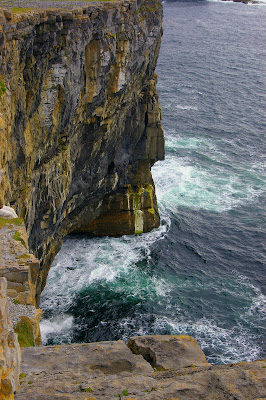Yesterday I woke up bright and early (5am) so that I could hop on the GoBus back out to Galway because I had a job interview out there today. The reason I left so early yesterday being that I was crashing at Liv and Kellie's flat so I didn't have to pay for a hostel for the night. For those of you who don't know who Liv and Kellie are let me give you a brief introduction;

Olivia is the one on the right, she's 18 as well and from Calgary, Alberta. Beside her is Kellie, Kellie is 21 and she's from Toronto, Ontario. I met these two through SWAP they both arrived in Ireland shortly before me. They're living together in a nice little flat in Galway, with an extra room I might be occupying ( more on that later.)
Liv and Kellie had an American Couch-Surfer staying with them who joined us on our adventures in Connemara; his name is Nick, he's 22 from San Diego and plays in a pirate band (I mention this any time we had to introduce ourselves to anyone) This is Nick;

(He was eating his lunch when I took this photo, he'll more than likely kill me when he see's it...)
We made the trek down into City Center Galway to the bus depot to get our tour tickets for the tour; it was bright and sunny when we left Galway, I only mention this as to explain why, when it started pouring rain in Connemara, I didn't have my umbrella with me. Shortly after boarding the bus we all proceed to fall asleep. After waking up we realized we were already well into Connemara, one of the most beautiful and rugged terrain's in Ireland.
The main stop on this bus tour was Kylemore Abbey and before I show you any photos of the place I'm going to have to tell you a short (but not really) history of the abbey for it makes the
beauty of the place all that more beautiful.
The Kylemore Abbey was never originally an abbey, when it was built between 1863 and 1868 it was the private residence of an English couple, Mitchell and Margaret Henry. The Henry's were well loved by all of the resident's in Connemara which was a rare occurrence because A. they were English and B. they were landowners. But the Henry's were a loving and caring family and were amazing landowners, Mitchell Henry was a well
known English doctor and if he ever heard of one of his tenants or their families falling ill he would provide the best medical attention possible, free of charge. As well, during the Irish Famine of 1879 the Henry family would hire on tenant farmers to work in the castle so that they were still able to make money and feed their families, even though the Henry's needed no extra help. The Henry's had 9 children and when their youngest son was diagnosed with TB their doctor had suggested taking him on excursions to the Mediterranean, as the dry hot
climate would be good for him, it was on one of these excursions that Mitchell's wife Margaret
contracted West Nile and died in Ciaro. Upon arriving back to Kylemore Castle he had a mausoleum built where he buried his wife so that she could forever lie in the place she loved best, Connemara. Before Margaret had passed away she had constructed a brilliant walled
garden not far from the castle; the last walled garden in Ireland to be built. A few years af
ter the death of his wife, Mitchell Henry lost another woman he loved dearly, his eldest daughter. After these deaths Mitchell Henry could no longer stand the thought and he and his family abandoned Kylemore Castle.
The castle lived a quiet life until the first world war when a group of nuns had to flee from Belgium before their abbey was destroyed. Fleeing from Belgium to France, from France to England and finally from England to Ireland the nuns finally found a new home in Kylemore Castle. The castle was so expensive to run that even the King of England had refused to
purchase it stating that he simply couldn't afford it. The nuns were determined to stay and opened up a private boarding school but nothing they could do would raise enough money to keep the castle in working order so finally they had to open it up to the public. While the nuns still reside in Kylemore abbey the school is no longer operational and many rooms
are private living quarters for the nuns.






























































